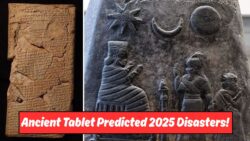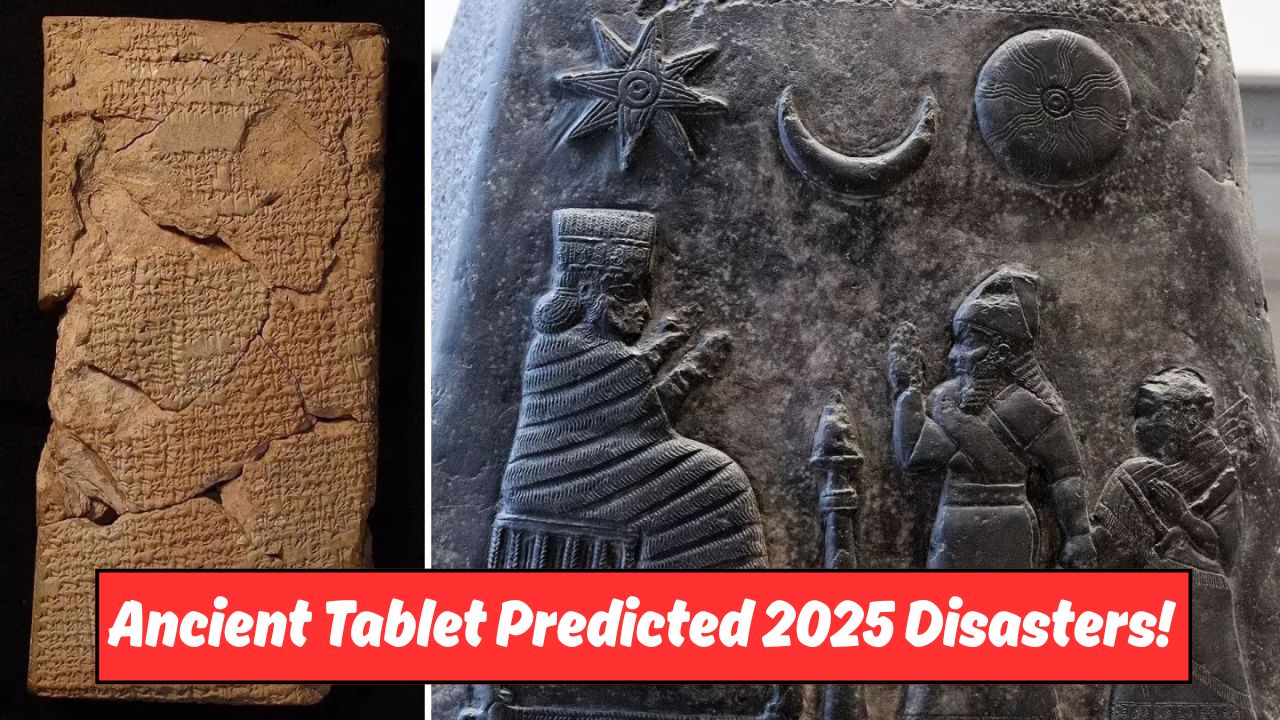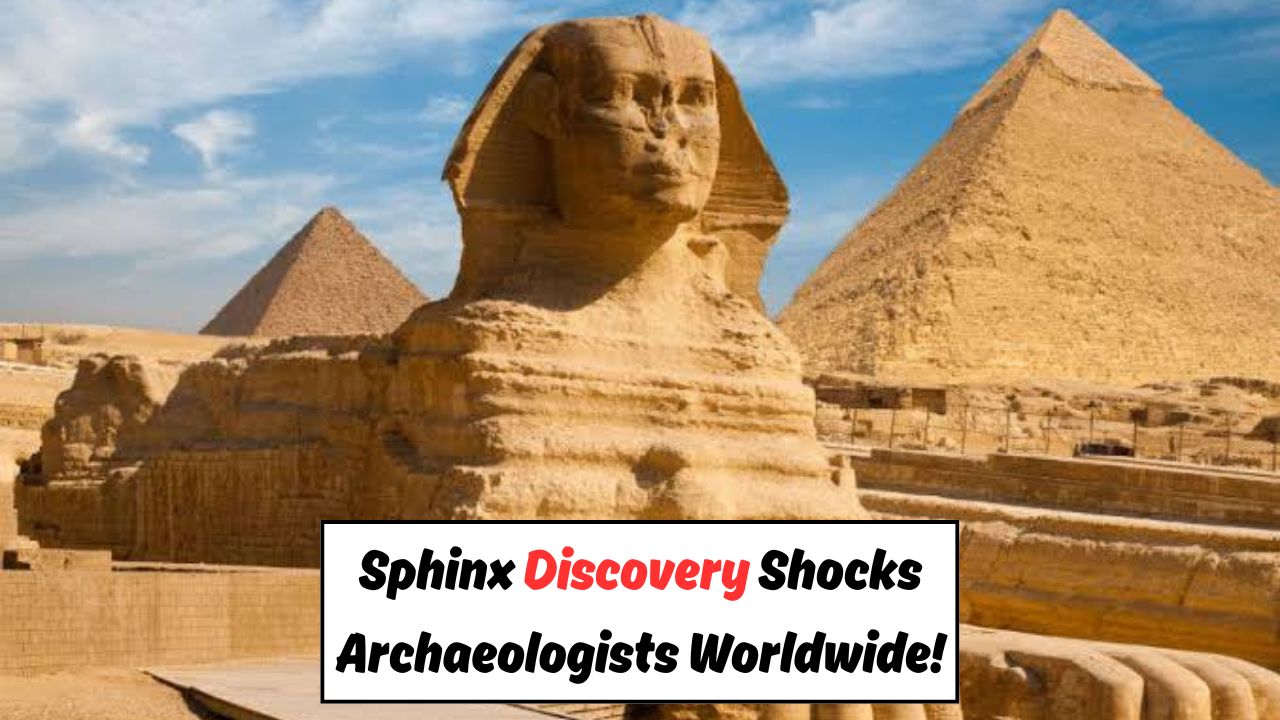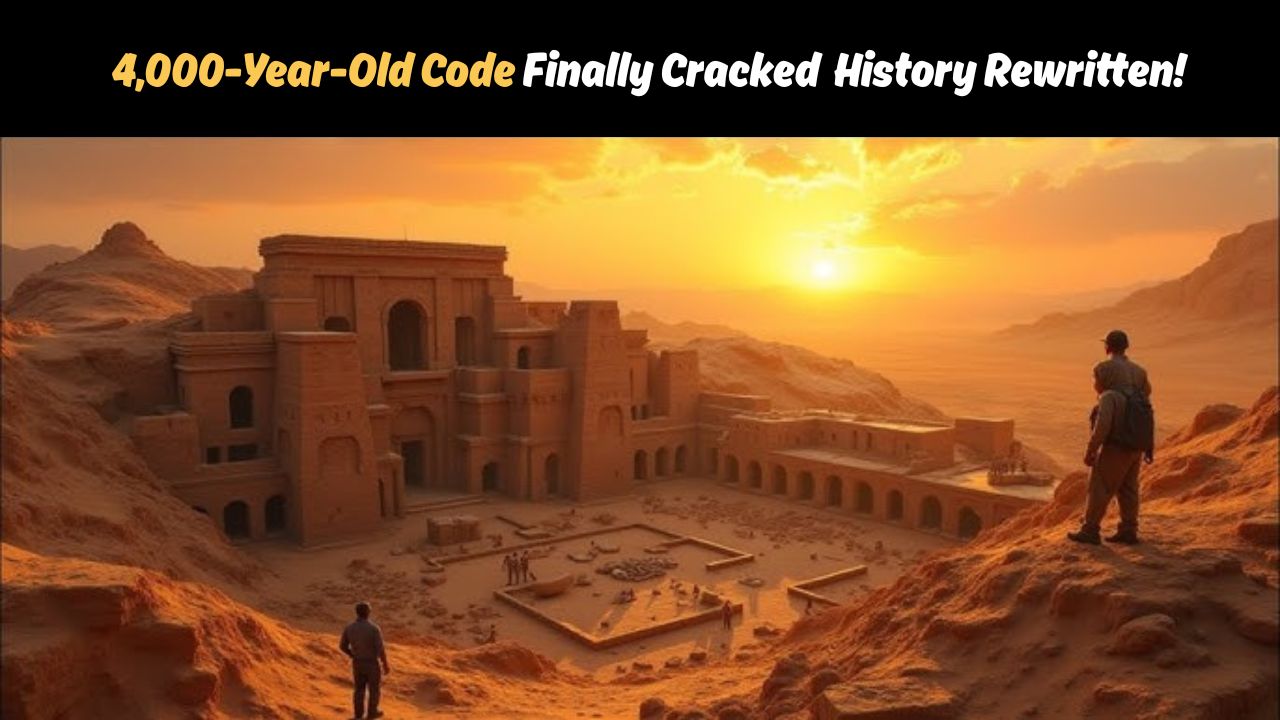Newly Found Tomb – In a stunning discovery that’s sending shockwaves through the archaeological community, researchers in Turkey have uncovered an ancient tomb that may predate even the Egyptian pyramids. Located in the southeastern region of the country near the city of Mardin, this site is believed to be over 7,000 years old, challenging everything we thought we knew about early human civilization. This burial structure, unearthed during a routine excavation by local teams in collaboration with international experts, contains an extraordinary blend of early Neolithic tools, intricate carvings, and burial artifacts. Radiocarbon dating suggests it may date back to 5,500 BCE or earlier—centuries before the construction of the Great Pyramid of Giza. If verified, this would make it one of the oldest known monumental tombs in human history. This discovery has the potential to reshape global timelines and prompt historians to reexamine early human activity in the Fertile Crescent, a region long considered the cradle of civilization. The implications go beyond the academic realm; tourism, cultural pride, and international research funding are now surging in Turkey. But what exactly was found? Why is it so significant? And how does it compare to other ancient marvels? Let’s dive into the details that make this tomb one of the most important archaeological finds of the 21st century.
Where Was the Newly Found Tomb Discovered?
The tomb was located near the city of Mardin, a region steeped in Mesopotamian history. The location alone raised eyebrows, but it’s what was found underneath that astonished scientists.
- Found during an infrastructure dig near Dara Ancient City
- Site depth: approximately 12 feet underground
- Surrounding area showed signs of early settlement
- Artifacts included stone tools, ceremonial relics, and bones
- Team included experts from Turkey, Germany, and the UK
- No prior records indicated presence of a major tomb
- Site showed complex stone architecture beyond expected era
Who Built It? Tracing Clues Back to Prehistoric Societies
Researchers are now scrambling to determine which early culture could have constructed such a sophisticated site so long ago.
- Likely tied to pre-Halaf or Halaf culture (circa 6,000–5,400 BCE)
- Construction predates writing systems and known dynasties
- Architectural complexity suggests organized labor and planning
- Carvings may indicate early forms of ritual or worship
- Bones belonged to adults and children, suggesting family-based burial
- Comparison to Göbekli Tepe architecture under way
- Advanced stone-cutting tools discovered on-site
How Old Is the Tomb? Radiocarbon Dating and Its Shocking Results
Scientists immediately began extensive testing to determine the tomb’s age, and the preliminary data exceeded all expectations.
- Multiple bone samples tested using AMS radiocarbon dating
- Estimated construction: 5,500–5,800 BCE
- Tools tested for wear and era-specific characteristics
- Organic remains matched early Neolithic period
- Similar soil layers dated in nearby Mesopotamian sites
- One carving style matched artifacts from Çatalhöyük
- Age possibly 500–700 years older than Giza pyramids
What Was Found Inside? Artifacts and Human Remains
Beyond just a burial space, the tomb provided a treasure trove of early human history, with many items never seen before.
- Carved animal figurines resembling deer and foxes
- Jade-like beads (not native to region) suggest trade
- Tools made of obsidian, flint, and basalt
- Burial jars with geometric patterns
- Wooden remains indicating possible coffin structures
- Charred wood used in funerary process
- Human skulls arranged in circular formation
Comparing the Tomb to the Egyptian Pyramids – A Timeline Shift?
The possibility that this Turkish tomb is older than the Pyramids has forced a side-by-side reevaluation of ancient timelines.
| Site | Estimated Age (BCE) | Location | Monument Type | Cultural Significance |
|---|---|---|---|---|
| Turkish Tomb (Mardin) | 5,500–5,800 BCE | Turkey | Burial Tomb | Oldest complex tomb in Fertile Crescent |
| Great Pyramid of Giza | 2,560 BCE | Egypt | Pyramid | Symbol of Egyptian power |
| Stonehenge | 3,000 BCE | United Kingdom | Stone circle | Astronomical and ceremonial purposes |
| Göbekli Tepe | 9,500 BCE | Turkey | Ritual complex | First known temple |
| Çatalhöyük | 7,100 BCE | Turkey | Urban settlement | Early human habitation site |
| Sumerian Ziggurats | 2,100 BCE | Iraq | Stepped temples | Religious and civic centers |
| Harappan Burial Sites | 2,600 BCE | Pakistan/India | Brick-lined tombs | Ancient Indus Valley burials |
Did This Civilization Know More Than We Think?
The sophistication of the burial site suggests advanced knowledge of geometry, planning, and spiritual belief—far earlier than assumed.
 Secrets Under the Sphinx: What Archaeologists Found Is So Controversial, They Tried to Cover It Up!
Secrets Under the Sphinx: What Archaeologists Found Is So Controversial, They Tried to Cover It Up!
- Stones placed with directional symmetry
- Carvings appear astronomically aligned
- Repeated use of spiral motifs—possibly symbolic
- Bones treated with lime before burial
- Multiple layers in tomb show ritualistic sequencing
- Presence of pigments indicates color usage in rituals
- Burial pattern mimics solar and lunar cycles
What Makes This Discovery a “Game Changer”?
This isn’t just another ancient find—it challenges the entire framework of how human societies evolved in structure and complexity.
- Pushes back timeline for complex funerary practices
- Suggests civilization may have advanced independently in Anatolia
- Opens possibility of yet undiscovered ancient trade networks
- Revives interest in Turkey’s prehistoric archaeology
- May lead to rewriting of history in school textbooks
- Draws global tourism and scholarly attention to Mardin
- Archaeological funding and UNESCO protection now being considered
How the Tomb Was Preserved for Thousands of Years
Preservation has been key to this site’s remarkable state. Natural and human-made factors played a surprising role.
- Site was sealed under limestone layer—preventing erosion
- No major construction above it until 2020s
- Dry climate of Mardin helped preserve wooden elements
- Burial materials included desiccants like ash and lime
- Tomb layout minimized exposure to outside elements
- Multiple stone layers created insulation
- Underground location avoided damage from wars or looting
Why Is Turkey Emerging as a Global Archaeological Hotspot?
Turkey is quickly becoming the centerpiece of early human history, with multiple groundbreaking finds in the past 20 years.
- Göbekli Tepe confirmed as oldest temple in 1990s
- Karahan Tepe uncovered in 2020s with stunning results
- Çatalhöyük continues to produce key urban insights
- The new tomb complements and supports these discoveries
- Location in Fertile Crescent ideal for early civilization
- International collaboration boosting excavation efforts
- Government support for heritage tourism has grown massively
Could There Be More Hidden Sites in the Region?
Experts believe this is just the beginning, and more lost civilizations may be buried nearby.
- Satellite imaging shows multiple anomalies in region
- Surveys underway in Şanlıurfa and Batman provinces
- Drone technology being deployed to scan deep layers
- Local shepherds have reported stone patterns in nearby hills
- Possible evidence of early agriculture zones under soil
- New tomb may be part of a larger necropolis
- 2026 digs already planned by universities from Europe and Asia
| Discovery Element | Status Confirmed | Importance Level | Linked Civilization | Research Phase |
|---|---|---|---|---|
| Tomb Age (5,500–5,800 BCE) | Yes | High | Proto-Anatolian | Peer-reviewed |
| Human Remains | Yes | Medium | Early Neolithic | Under analysis |
| Trade Artifacts | Yes | Medium | Possibly Halaf/Pre-Halaf | Ongoing |
| Bone Circle Arrangement | Yes | High | Ritual Unknown | High interest |
| Obsidian Tools | Yes | Low | Eastern Anatolia | Confirmed |
| Pigment & Beads | Yes | Medium | Undetermined | Being tested |
| Architectural Layout | Yes | High | Unique – No direct match | Structural review |
As excavation continues, experts around the world are watching this tomb with intense interest. Its age, complexity, and preservation offer a rare window into a forgotten chapter of humanity’s rise. And if this is just the beginning, we may be standing on the threshold of rewriting the very story of civilization.






